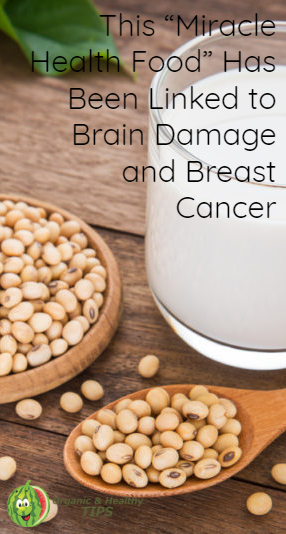If you were to carefully review the thousands of studies published on soy, I for sure believe you have reached the same conclusion as I have and that is, the risks of consuming unfermented soy products FAR outweigh any possible benefits.
Notice I said unfermented soy products.
For centuries, Asian people have been consuming fermented soy products such as natto, tempeh, and soy sauce, and enjoying the health benefits. Fermented soy does not wreak havoc on your body like unfermented soy products do.
Unfortunately, many Americans who are committed to healthy lifestyles have been hoodwinked and manipulated into believing that unfermented and processed soy products like soymilk, soy cheese, soy burgers and soy ice cream are good for them.
How Did Soy Foods Become So Popular?
If it seems like soy foods appeared out of nowhere to be regarded as the “miracle health food” of the 21st Century, it’s because they did.
From 1992 to 2006, soy food sales increased from $300 million to nearly $4 billion, practically overnight, according to the Soyfoods Association of North America. This growth came about due to a massive shift in attitudes about soy. And this shift was no accident—it was the result of a massive investment in advertising by the soy industry that’s been wildly successful.
Soy is indeed big business, very big business.
From 2000 to 2007, U.S. food manufacturers introduced more than 2,700 new soy-based foods, and new soy products continue to appear on your grocer’s shelves.

According to the survey Consumer Attitudes About Nutrition 2008 (by the United Soybean Board):
- -As of 2007, 85 percent of consumers perceive soy products as healthful
- -33 percent of Americans eat soy foods or beverages at least once a month
- -70 percent of consumers believe soybean oil is good for them
- -84 percent of consumers agree with the FDA’s claim that consuming 25 grams of soy protein daily reduces your risk of heart disease
This is a tragic case of shrewd marketing and outright lies taking root among the masses with the end result of producing large profits for the soy industry and impaired health for most who have been deceived into using unfermented soy long-term..
As you can see from the extensive list of articles below, there is a large amount of scientific research showing that soy is not the nutritional panacea of the 21st Century.
The Dark Side of Soy
The vast majority of soy at your local market is not a health food. The exception is fermented soy, which I’ll explain more about later and even worse GMO soy that is contaminated with large pesticide residues as the reason it is GMO is so they can spray the potent toxic herbicide Roundup on them to improve crop production by killing the weeds.
Unlike the Asian culture, where people eat small amounts of whole non-GMO soybean products, western food processors separate the soybean into two golden commodities—protein and oil. And there is nothing natural or safe about these products.







